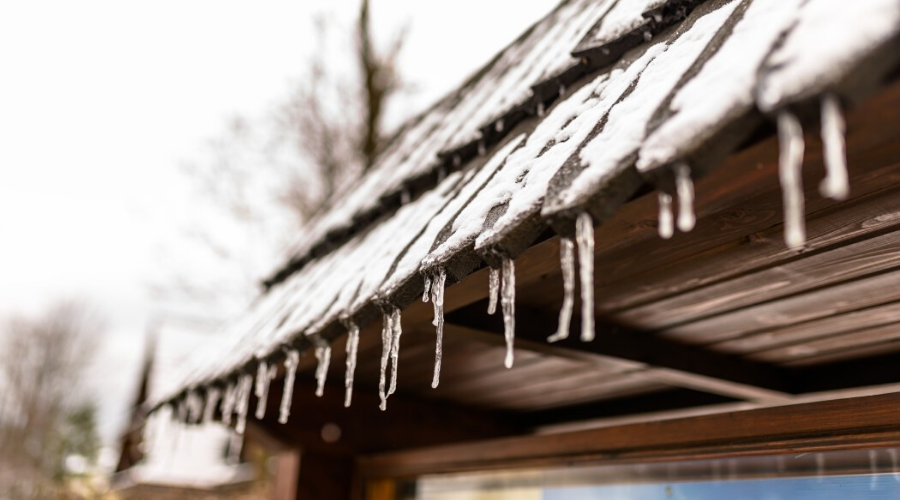The winter can take a toll on your home, and your roof can take a beating. In addition to dealing with heavy snow, your roof could experience ice dams. The only way to stop them might be a roof heat cable. Find out which heat cables and tapes will prevent ice dams this winter. Then, you can rest easy knowing that your roof is safe.
Why Choose Us
One of the most expensive home repairs is a roof replacement. Until my roof needed to be replaced, I didn’t think much about the high cost of roof damage. I wasn’t abusing my roof, but I also wasn’t caring for it the way it should be treated.
In the winter, there aren’t many things you can do for damage control. If you have a blizzard, there’s no doubt that it will affect your home. However, there are ways in which you can limit the damage done by ice and snow. I understand the value of heat cables, and know what to look for in heat cables or heat tape.
|
PRODUCT |
FEATURES |
||
|---|---|---|---|

|
|
||
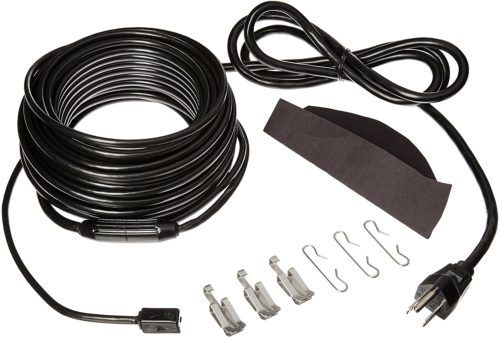
|
|
||
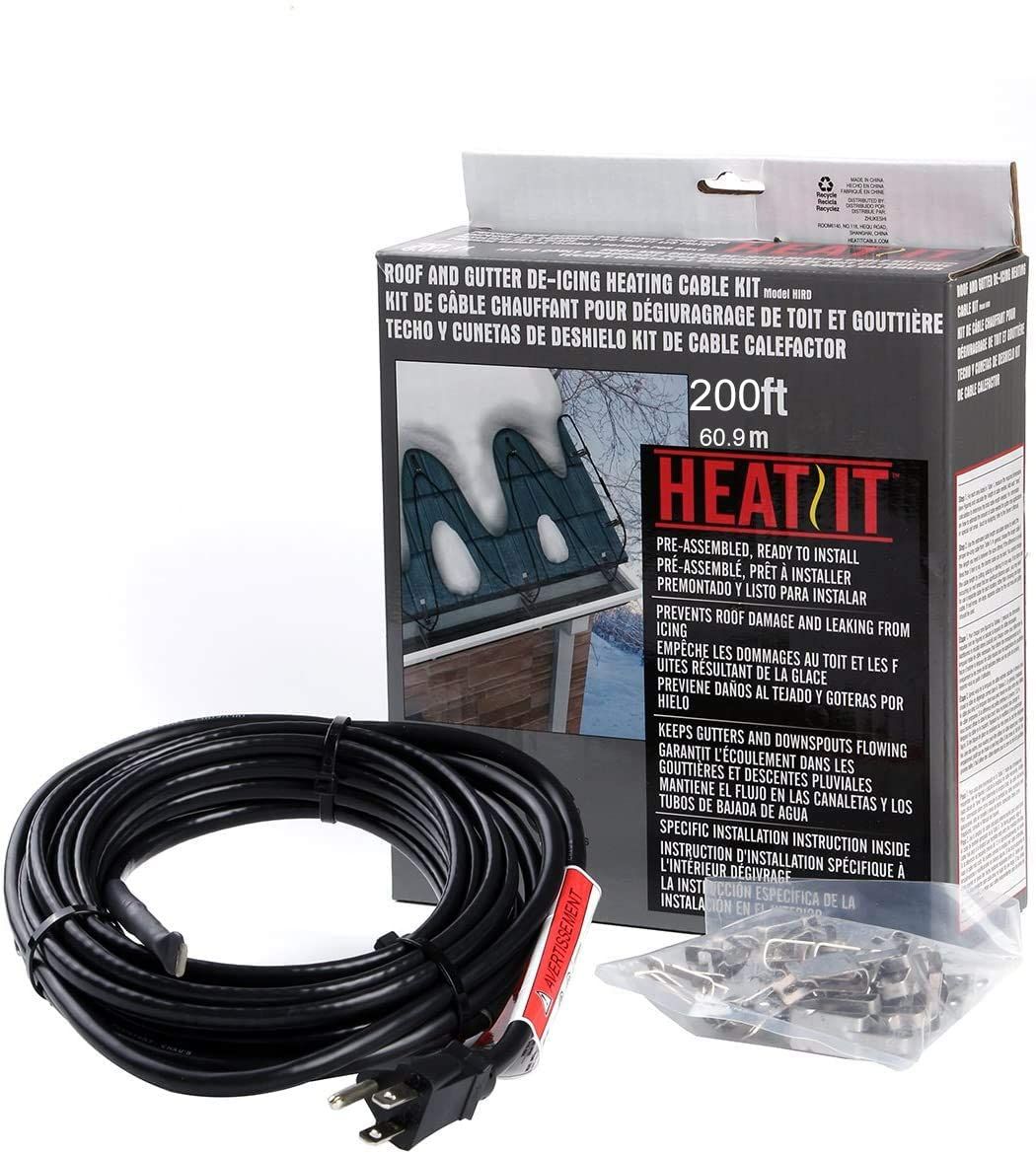
|
|
||
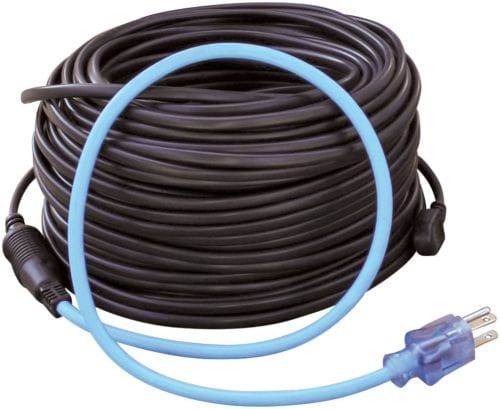
|
|
||
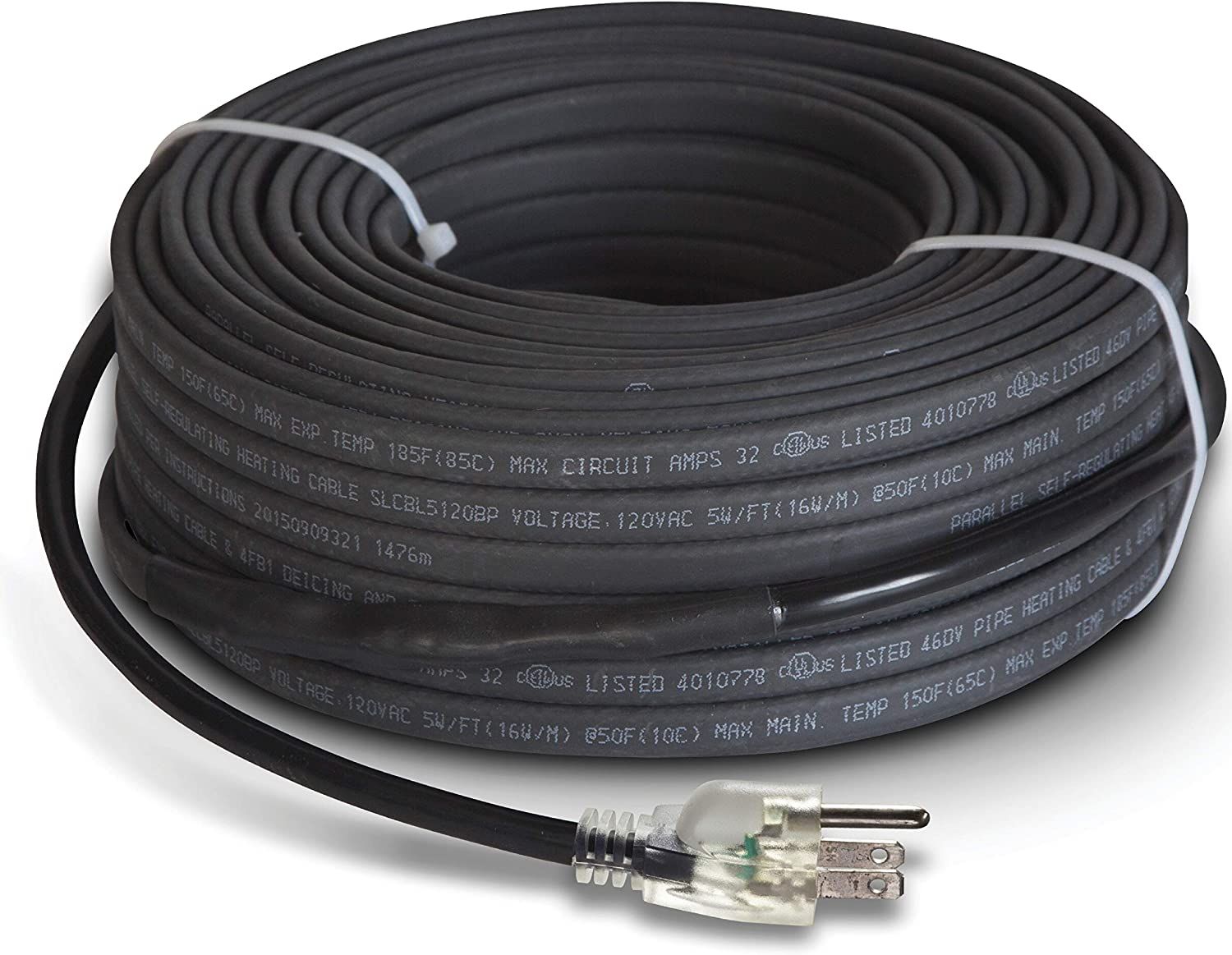
|
|
What You Should Know About Heat Cables and Tape
When you see icicles hanging down from your roof, you probably don't think twice. After all, they're picturesque. But don't let the charming appearance of icicles fool you. Where there are icicles, there is an ice dam. And ice dams are a warning sign of serious damage that can happen to your roof.
Icicles form because of ice dams. During the winter, some heat escapes from your roof and melts the snow and ice sitting on the surface.The melted snow drips down your roof and under snow, and then refreezes near the overhang of the roof. Because there’s no heat escaping from the edge of your roof, the air is cold enough to refreeze the ice. Icicles form as the water freezes, and that’s where the trouble occurs. To prevent damage from ruining your roof, you can rely on heat cables, also known as heat tape. A snow rake is also an option, but this takes more work.
How Does Roof Heat Tape Work?
Roof heat tape and roof heat cables are one in the same. Essentially, a roof heat cable is a heater cord that has a coating to protect it from the harsh weather. When the cord is plugged in, it creates heat. The heat prevents water from freezing near the edge of your roof, which means you are less likely to have roof damage. Your eaves, valleys, and gutters can have a smooth flow of water.
The hardest part of using heat cables is the installation. First, you need to find the areas you're worried about. If you noticed ice dams last year, place the tape in those areas. Loop the tape in a zig-zag shape along the edge of your roofline and gutters. With this pattern, your roof will remain warm enough to keep ice from building up.
You can keep the heat cables unplugged until the freezing temperatures arrive. Then, plug in the cables and let them do the work.
How Much Does it Cost to Run Roof Heat Tape?
The cost of running your roof heat tape depends on several factors. First, it depends on the type of heat cables. A constant wattage cable can't regulate power, so it uses up more energy. Meanwhile, a self-regulating cable controls the energy use. Once the cable gets warm, power usage adjusts and drops.
The length of the cable also matters. If you look on the back of your product packaging, you can see how many watts per foot your cable uses. To determine the cost of using the cables, multiply your cost per kilowatt hour by the watt usage of the roof heat cable. The resulting number is the energy cost.
It's important to remember that, although there is a cost to running the tape, doing so saves you from a roof repair or replacement. In the long-run, your time and energy spent on heat cables will save you substantially.
Are Roof Heat Cables Dangerous?
Some people hesitate to use heat tape because they fear that it's dangerous. However, like most household products, heat tape is only hazardous if it's not properly used. Before using your cables, make sure your gutters and shingles are in good condition.
If you have any damage to your gutters or roof, water melted by your heat cables could leak into your home. Furthermore, hanging the cables could cause even more damage to broken shingles or gutters. To prevent any danger, repair your roof and gutters prior to installing the heat tape.
When installing the tape, keep in mind that you only need it in problem areas. There's no reason to place the tape high on your roof, as the heat from your home will be enough to warm the ice. Climbing high on your roof is dangerous, especially in the icy weather. When installing the tape, be cautious. Don't climb on a ladder alone and follow the safety directions on the ladder.
The biggest risk of using heat cables is the electrical hazard. Therefore, you should be very cautious when installing them. Follow all of the directions on the packaging and only use the product as directed. If you want to reduce the risk, you can hire someone to handle the installation.
What Type of Roofs Can Handle Heat Tape?
Most roofs can use heat tape, but you need the right product for the job. While most heat cables work on shingle roofs, only some work on metal roofs. Before you buy a product, make sure it works on your type of roof.
Typically, attaching heat cables to metal roofs is more difficult than attaching them to shingle roofs. The smooth surface doesn't give you much to work with.
Top Heat Cables and Tape
Here are our picks for the best heat cables and tape.
Shingle Roof
If you have a roof with shingles, these products will get the job done.
Best Easy-Installation Heat Cable & Tape Kit for Shingled Roofs
Designed for shingle roofs, this product is easy to install.
- Clips easily to roof
- Also works on downspouts
- Does not handle low temps
|
|
This cable works on roofs, gutters, and downspouts. Although it doesn't work on metal roofs, it works on a variety of other roof types. The product is available in several lengths, which allows you to get the right amount of cable for your roof.
For easy installation, this product comes with six packages of clips. There are extra clips, making it possible for you to configure your cables however you want to. You can clip the heat cable to your shingles and hang it all in a short time. With a versatile design, this product can melt ice and snow rapidly. It requires no maintenance and is made with a high quality material. Additionally, the product is tested for safety.
At five watts per foot, this product doesn't use up too much energy. Thanks to its easy installation and low energy usage, this cable is an excellent choice for individuals with shingle roofs.
Best Low-Energy Heat Cable & Tape Kit for Shingled Roofs
This roof heat cable is designed for shingle roofs and comes easy to install.
- Good for low temperatures
- Comes with spacers and clips
- Not for metal roofs
|
|
With instructions that are easy to comprehend, the Frost King heating cables make installation a breeze. They come preassembled, and the only thing you need to do is hook the cable up with shingle clips. There are cable spacers also included in the packaging, and if you follow the instructions, you won’t have any problems.
Available in lengths between 30 feet and 200 feet, this product gives you enough cable to cover a large roof. Although this product doesn't have a built-in thermostat, it does have a timer. Made with high quality materials, the product works in very low temperatures. In fact, it works in conditions as cold as -40 degrees F.
If you’re concerned about the energy use, you will be happy to know that this product produces five watts per foot. It’s an affordable and easy-to-use way of keeping your roof and gutters safe from water damage this winter.
Best No-Worry Heat Cable & Tape Kit for Shingled Roofs
If you want a cable that allows you to cross it over itself, this product is an excellent option.
- CSA and ETL approved
- High quality materials
- Not suitable for all roof types
|
|
On the inside of these cables, there's XLPE. The outside is covered in weather resistant PVC, which allows this product to work in low temperatures. Inside the cable, there's aluminum foil and a tinned copper braid. The product was designed with safety in mind. With a three year warranty, this roof heat cable is guaranteed to last. It's CSA and ETL approved, which is crucial to your safety.
This product comes pre-assembled. When it's time to install the cable, you only need to install the cable with clips and spacers. The instructions are easy to understand and won't leave you doubting yourself. You can use it on metal or plastic gutters and downspouts. Additionally, it works with inclined roofs and all non-combustible shingles.
Unlike some cables, this one can overlap and be crossed without overheating. It has an output of about 50 degrees Fahrenheit, allowing you to prevent ice dams from forming.
Best Harsh-Climate Heat Cable & Tape Kit for Shingled Roofs
A 240 foot long heating cable, this product can work in conditions as cold as zero degrees.
- Works in low temperatures
- Comes with shingle clips and spacers
- Need to buy control unit for the added control
|
|
Measuring at 240 feet long, this deicing kit can cover your roof. It comes with a two foot power cord and puts out 1200 watts. Included in this kit is the roof cable, spacers, shingle clips, and an owner's manual. It has everything you need to prevent ice and snow from freezing over on your roof and doing damage to your home.
Designed for use on inclined roofs, tab-shingle roofs, gutters, and downspouts, this product is versatile. It's not recommended for installation on a metal roof, but may be able to by using a snow guard or another installation method. The instructions on this product are simple and thorough.
With the ability to heat your roof in temperatures as low as zero degrees Fahrenheit, this product can work in tough climates. You can use it with an automatic control unit to save energy use. Made by the same company, the control unit is a useful tool.
Metal Roof
If you have a metal roof, you can rely on any of this heating cable.
Best No-Worry Heat Cable & Tape Kit for Metal Roofs
This kit allows kids to decorate their own snowman. You supply the snowman’s body, and this kit covers the rest.
- Five year warranty
- Works on metal roofs
- More expensive than other options
|
|
The Grip Clip heat cable is for use on flat, metal, asphalt, and rubber roofs. It's perhaps the most versatile heat cable on our list, due to its ability to work with most types of roofs. Because the product is commercial grade, you can trust that it will remain on your roof and work well. As a sign of confidence in their product, the company offers a five year warranty. If you have an issue with the product, you can count on an American support team to be ready to address it.
This heat tape is self-regulating, which comes with many benefits. You can overlap the cable without worrying about a fire starting. Additionally, the cable works in temperatures as cold as 15 degrees Fahrenheit. The cable is sensitive enough to tell when some areas of your roof need more or less heat. It's a reliable and durable product that's highly effective at preventing ice dams.
How We Picked
When looking at heat cables, we considered the details that matter. You need a quality product that won't wear down after one winter. In addition to considering the warranty on products, we also looked at the quality of the materials. We know how tough the winter can be on your roof, and we wanted products that could withstand the winter.
We also looked for heat cables that had a history of working well. While there are hundreds of heat cables available, only some of them are effective. Because your roof is at stake, we picked heat tape that works well in all temperatures.
Conclusion
Out of all the heat cables, Grip Clip impressed us the most. In addition to working on both shingle and metal roofs, the product is commercial-grade. It's hard to find self-regulating roof cables, so this product is a gem. It uses energy effectively and won't run up your energy bill.
Perhaps the most convincing argument for this product is the five year warranty. If the company trusts the product that much, you can trust it. If you're looking for a heat cable that you can trust to keep your roof safe, the Grip Clip should be your top choice.
Which heat cable do you like the best? Comment below and let us know!

